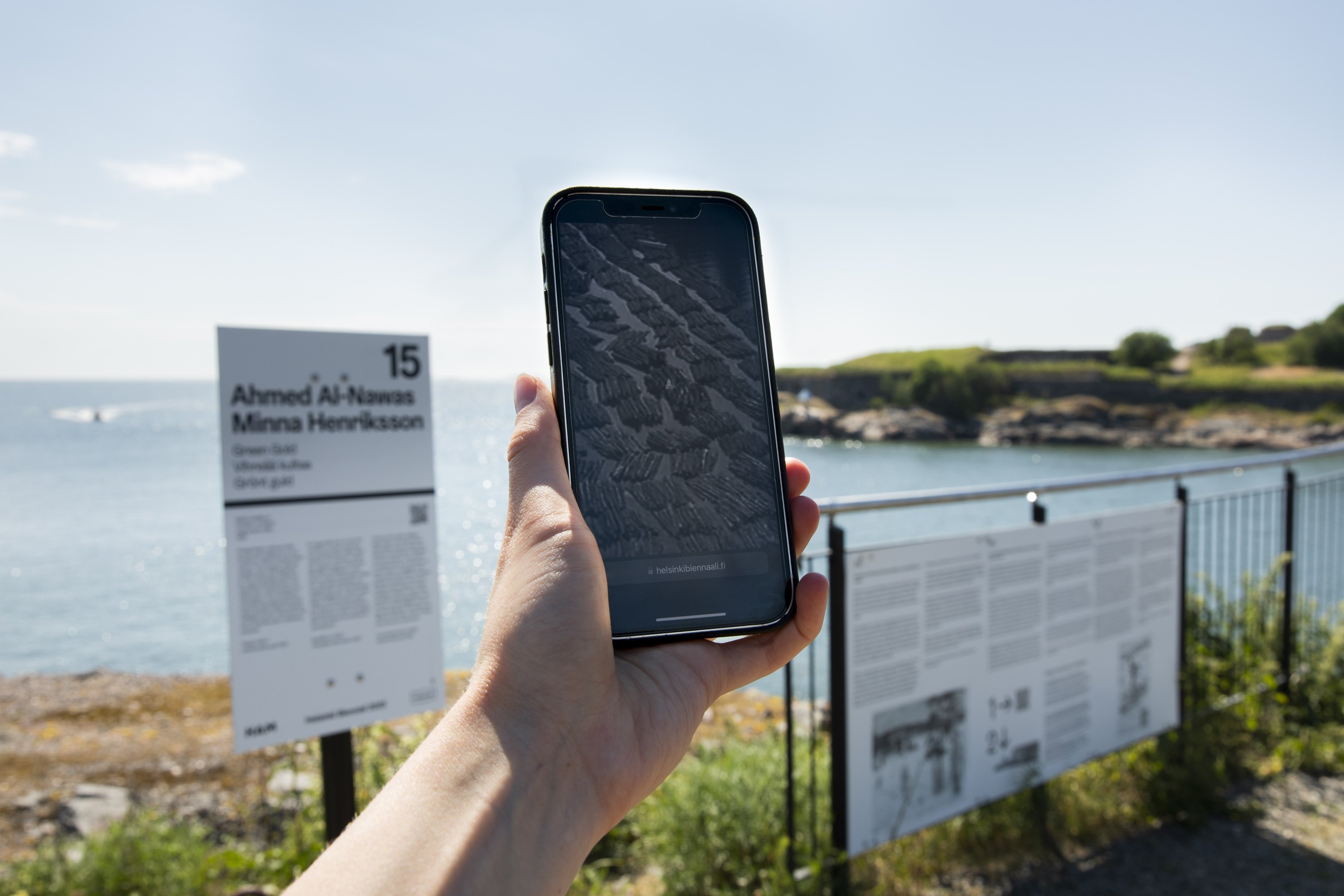Ahmed Al-Nawas and Minna Henriksson are Helsinki-based artists and art workers who have been collaborating since 2015. Al-Nawas’s praxis focuses on archival research and collaborative knowledge production, while Henriksson’s work relates to leftist, anti-racist and feminist struggles, often drawing from real historical events.
For Helsinki Biennial 2023, the artists continued and expanded their critical deconstruction of national identity, focusing on the role of forestry in the project of nation building in Finland. In addition to raising questions about forestry policy in Finland, their work’s location connected it with the geopolitics, economics and logistics of moving raw materials through the Suez, Gibraltar and Bosphorus channels, as well as the Saimaa channel shared by Finland and Russia.
The work Green Gold (2023) was experienced as an AR piece in which you see a boat pulling a large timber raft towards Kustaanmiekka channel, which lies between the islands of Vallisaari and Suomenlinna.
On a guided tour of Vallisaari Island with a former resident, Hannu Hurskainen, we learned that ships entering Helsinki used to dump timber and other waste into the sea just off Vallisaari. We imagined the shores dotted with discarded pieces of wood drifting in the sea. Inhabitants of the island would collect the timber and build stacks on the rocks to dry it for firewood – this was back when all heating and cooking on the island was wood-fuelled. Cutting down trees was forbidden, as it is now, with local flora being strictly protected by the enterprise governing state-owned land and water resources, Metsähallitus.
Recently, the practice of timber rafting has returned to Finland, and rafting volumes are predicted to increase in years to come. It feels like a strange mirage from days gone by. The celebrated ‘green gold’ that brought prosperity to Finland in bygone days masked unsavoury realities such as the hazardous labour conditions endured by timber rafters the ‘tukkijätkä’s, and the tragic erasure of forests set adrift in massive rafts, leaving nothing but stumps behind.
For a long time, timber rafts disappeared from our visual reality, with Finland declaring its aim to become carbon neutral and the first fossil-free welfare society by 2035. All this while, Finland has been importing an annual total of about ten million cubic metres of timber from Russia. Since Russia’s attack on Ukraine, trade routes have been blocked and Finnish industry has had to increase logging within its own territory. As a result, Finland’s carbon sink has collapsed.
What does the timber raft of today and tomorrow represent? Will national romanticism yet again divert our attention to the myth of the heroic log rafter and the prospect of forestry-derived monetary gains now that the industry is highly mechanized, society is increasingly privatized, and the winnings are hardly shared by all?
Ahmed Al-Nawas & Minna Henriksson

Ahmed Al-Nawas & Minna Henriksson: Green Gold. © HAM/Helsinki Biennial/Sonja Hyytiäinen
Ahmed Al-Nawas and Minna Henriksson have been collaborating on various projects since 2015. In their practice, they engage in a critical reappraisal of history, politicizing it through art, often with crafts as a focal element in their work. Their joint exhibitions include GENESIS, Serlachius Museum Gustaf in Mänttä, Finland (2023) and Fake Star, Turku Art Museum, Finland (2020).
Ahmed Al-Nawas & Minna Henriksson
Green Gold
2023
Augmented reality (AR)
Realization of AR: James Wreford
Commissioned by HAM/Helsinki Biennial 2023